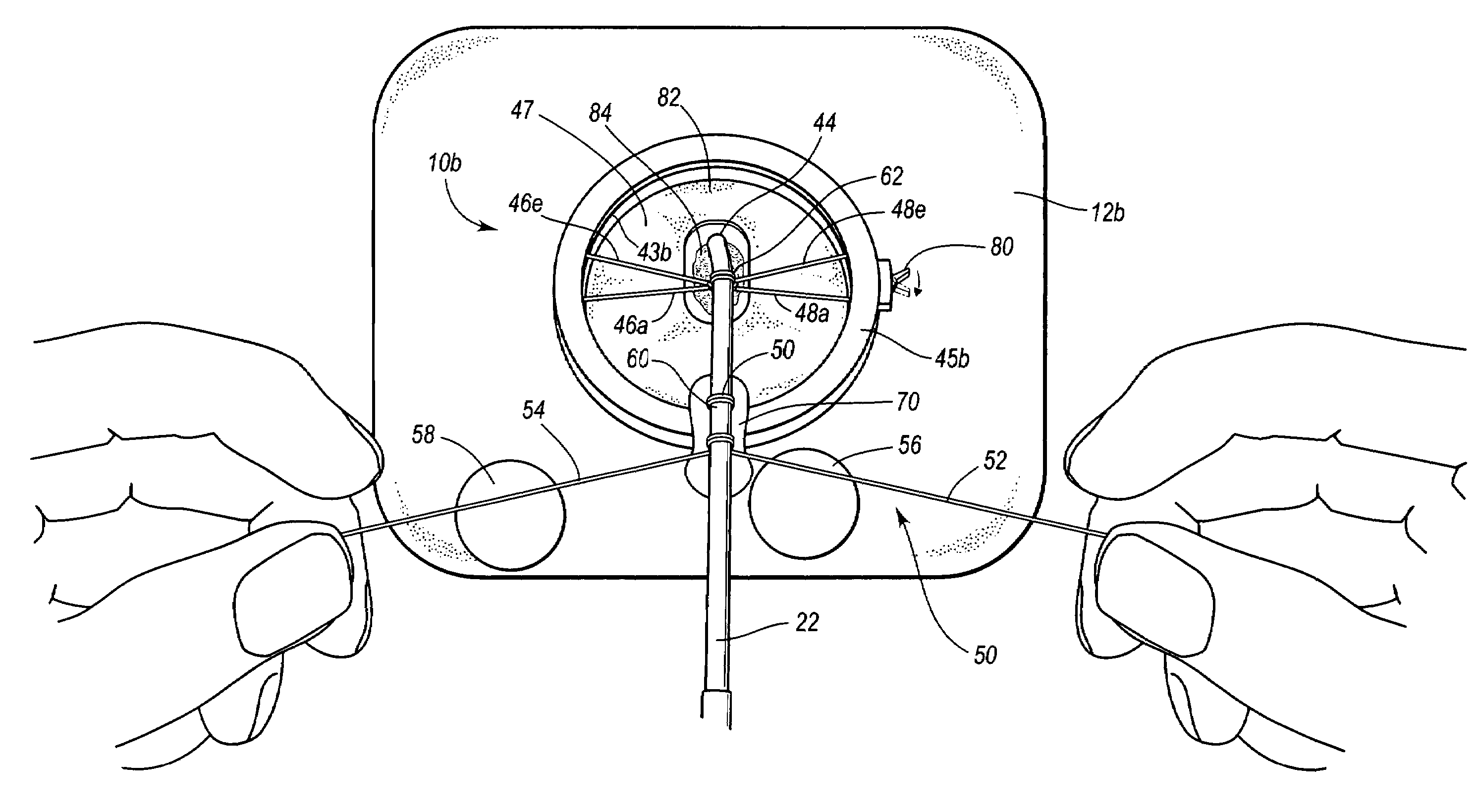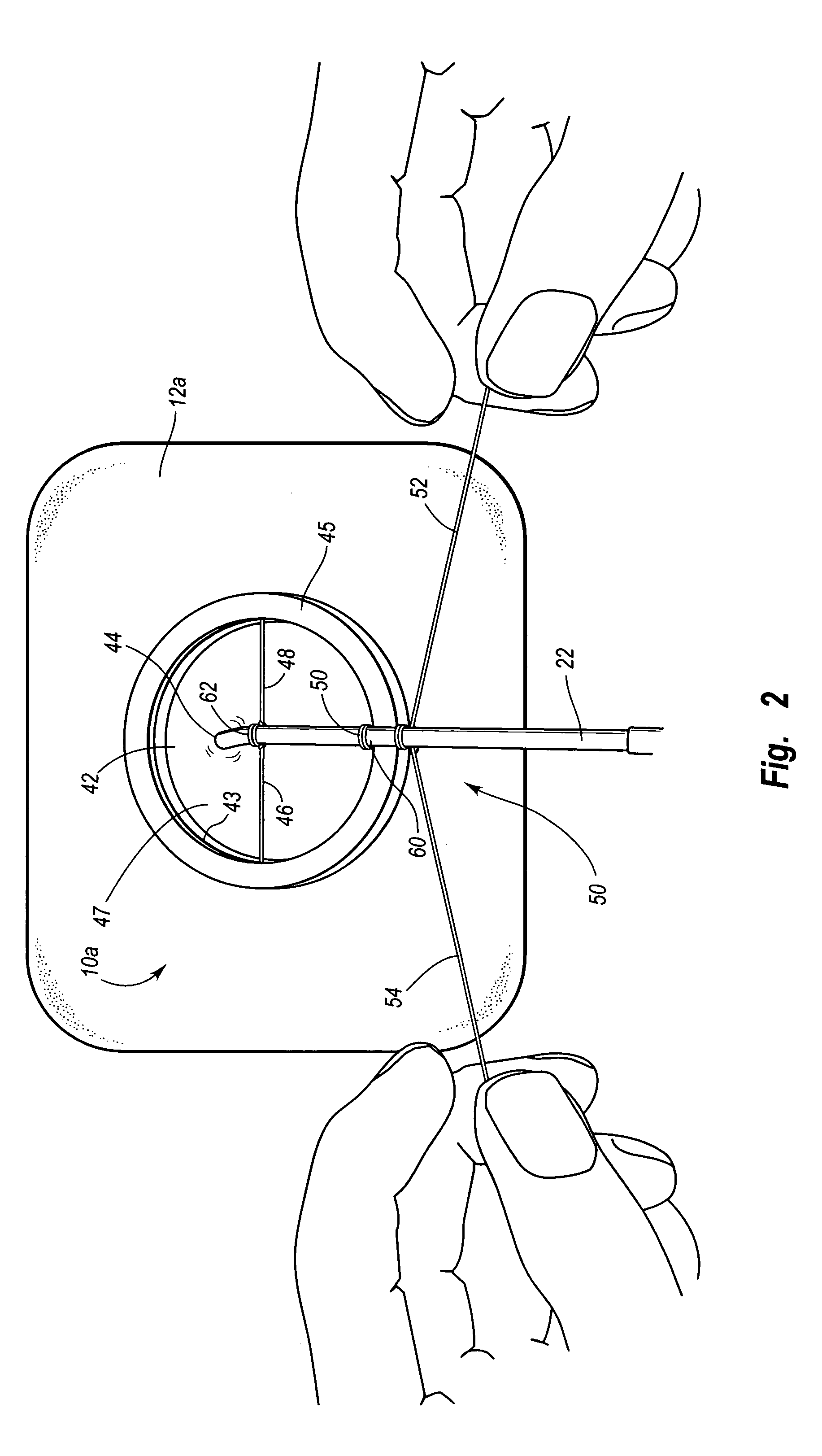Self-suturing anchor device for a catheter
a self-suturing and catheter technology, applied in the field of catheters, can solve the problems of catheter pulling at the suture site, bending the catheter, and affecting the patient's comfort,
- Summary
- Abstract
- Description
- Claims
- Application Information
AI Technical Summary
Benefits of technology
Problems solved by technology
Method used
Image
Examples
Embodiment Construction
[0042]The present invention extends to a self-suturing anchor device for a catheter. The self-suturing anchor device automatically secures the catheter without requiring the practitioner to manually suture the catheter to the self-suturing anchor device. The self-suturing anchor device has a securement mechanism which is adapted to be actuated by the user to automatically secure the catheter in a quick and efficient manner.
[0043]FIG. 2 illustrates a self-suturing anchor device 10a having a rotatable ring 45 adapted to automatically secure a catheter 22 to self-securing anchor device 10a with a plurality of sutures 46, 48 and 50 in a quick and efficient manner. In the illustrated embodiment, catheter 22 has been inserted into and secured relative to a patient site 42. Movement of catheter 22 can cause discomfort, or even injury, to a catheter insertion site 44 of patient site 42. This can be particularly problematic when catheter insertion site 44 is at a location where catheter 22 w...
PUM
 Login to View More
Login to View More Abstract
Description
Claims
Application Information
 Login to View More
Login to View More - R&D
- Intellectual Property
- Life Sciences
- Materials
- Tech Scout
- Unparalleled Data Quality
- Higher Quality Content
- 60% Fewer Hallucinations
Browse by: Latest US Patents, China's latest patents, Technical Efficacy Thesaurus, Application Domain, Technology Topic, Popular Technical Reports.
© 2025 PatSnap. All rights reserved.Legal|Privacy policy|Modern Slavery Act Transparency Statement|Sitemap|About US| Contact US: help@patsnap.com



